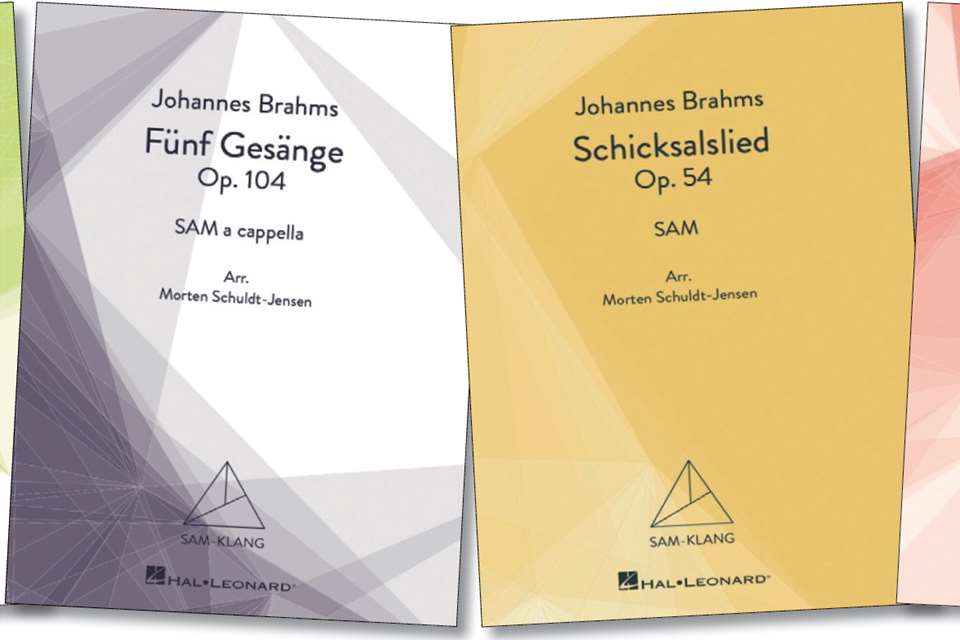Training choirs: the potential links between school and church
David Fawcett
Saturday, June 1, 2024
With collaboration central to the NPME, David Fawcett, assistant director of music at a church in Swanage, explores the benefits of potential links between schools and local church choirs

Roger Kennett
In common with anyone for whom music has been a major part of life, I owe thanks to teachers who encouraged and supported my interest.
One of my first primary school teachers was a pianist, with a piano in her classroom. Recognising my love of singing, she would draw me aside to sing with her, and later encouraged me to sing solos in our daily sung assemblies.
Later, outside school, I started piano lessons and joined my local church choir. While my parents were neither churchgoers nor musicians, the relationship between my Church of England (CofE) school and parish church, and their shared musical language of hymns, made it an obvious and easy thing to do.
Although there was nothing special about the choir – a typical church choir of girls, boys, women and men, led by an able amateur – its regular pattern of rehearsals and services gave me a grounding in music beyond that which I could have received at school alone.
At secondary level, I joined a far more accomplished choir, which performed to cathedral standards. Here, too, the link between church and school was significant: my choirmaster was also my school music teacher, subsequently became my organ teacher, created an organ scholarship for me, and so arranged my O- and A-Level schedules as to balance my academic learning and need for practical rehearsal time at church.
Without the complementary layers of musical education offered by school and church at each stage, and the collaborative links between them, I would not have enjoyed such a rich start to my musical life.
Lost opportunities
Some 50-odd years on, I reflect upon the benefits of those links, and note that far fewer children would enjoy such advantages now. If I were starting over again today, as a seven-year-old working-class lad in a northern English post-industrial town, the chances of my ending up as a professional choir director, organist and composer are minimal.
The advantages which fell into place for me are less likely to be there now. The generation of school teachers who taught me were more likely to be able to play a musical instrument, or to have sung in choirs themselves. Whole-school sung assemblies were routine, with a varied diet of hymns old and new. Churches and their church schools enjoyed a much closer, continuous relationship than in many cases now.
Vitally, also, it was commonplace then for the local parish church to have a choir involving children. It is, sadly, far less common now. Where choirs survived changes in fashion in the 1970s/80s, many are now adult-only. The general decline in churchgoing, especially among young families, makes it challenging to recruit children, and safeguarding concerns have contributed to a general sense that it is simpler to settle for an adult choir, rather than try to involve children.
This pragmatic defeatism troubles me. While I fully accept – and I can vouch from my own experience – that it is very difficult today to recruit children to church choirs, I strongly believe that we who work in church music cannot allow it to be too difficult. The potential gains, if only in the personal and societal terms of the free expert musical education that church choirs can offer to children and young people from all social backgrounds, are too great to discard.
Turning the tide
There are promising signs that some churches recognise what was lost when choirs were deemed unfashionable: a key means by which children and young people could engage actively and productively in the life of a church community, and through which the church could support their personal and musical development.
Some are attempting to turn this tide. I have committed the next stage of my own professional life to addressing the challenge, both in my immediate environment and, more generally, by working with others to change the context and so rebuild the opportunities.
A crucial part of this is, I believe, to establish new links, fit for today, between churches and schools, which are of mutual benefit and which improve musical access and outcomes for children everywhere.
So when I established a junior choir in my CofE parish church, I also volunteered to help out with music in my daughter's Roman Catholic primary school. Initially, I played the piano for its regular worship assemblies, as the school did not always have a teacher able to do so. Later, I formed a KS2 choir, focussed on leading the music at these assemblies. Now numbering around 15 members, both girls and boys, the choir rehearses weekly, partly in and partly after school hours. Its repertoire comprises traditional hymns, contemporary worship songs, a specially-composed Mass setting, and anthems and motets in English or Latin from composers spanning four centuries. Through this rich diet, they learn to use the full range of their voices well, especially the head voice which, once discovered, gives access to higher notes.
By contrast, some singing materials used in primary schools, particularly adult pop songs or backing-tracks lifted from YouTube, use a very limited range of notes, pitched too low for the young voice. I've sometimes had to push back against adults who don't want songs for children to ‘go too high’, when the real concern should be over harming children's voices by expecting them to produce notes that are too low for their smaller frames. Adults must, in singing as in other disciplines, be wary of judging what's right for children by reference to what's comfortable for themselves.
The choir learn from printed music, of which few had any prior experience, and we spend time in each rehearsal reinforcing this new skill. They perform responsively to live accompaniment, listening to each other and following musical direction. Along the way, there's a certain amount of Religious Education, as I'm keen that the children understand what they are singing about.
A lot of our repertoire, and some of our membership, is shared with my church junior choir, and we frequently join forces. As I also run the local choral society, I can provide opportunities for the children to perform in classical concerts: we have moved the start time forward an hour to 6.30pm to make it more feasible for younger children to participate in the first half and leave at the interval.
All this provides, at no cost to the school or the children's families, a deeper, richer set of musical experiences and learning than they might otherwise expect to receive at primary school, and potentially greater access to musical opportunity in later life. From my perspective, the musical links between church and school choirs, and outwards into the wider musical community, are mutually-reinforcing, creating greater strength, resilience and sustainability across all areas of my work. It is truly a win-win.
Greater collaboration?
Is this a model of collaboration which could be applied more widely? Well, clearly, every school is different, with varying traditions, demographics and musical resources. Churches also vary: some have choirs, some don't; some are traditional and others more contemporary in musical style; and while some have professional music leadership, others rely on amateurs of varying ability. Individual church music leaders may or may not have the spare time to volunteer in a school.
So, collaboration between schools and churches in the field of music education and access will not always be feasible or desirable. But, where it might be, if a mutually-beneficial context could be created to harness it, it is surely worth exploring.
Does your local parish church have specific musical resources and skills which you do not, which it might be willing to share? Could it provide, or does it have an ambition to grow, opportunities for children and young people to develop as musicians? What deeper musical links does it have into the wider musical community of which your school might take advantage?
Not all children have access to musical instruments or the one-to-one tuition to master them, but almost all can access their own voices. With the right guidance and a careful choice of material, they can quickly pick up the expertise to use them well. Churches performed this role effectively for decades, and many are still equipped to do so today.
Wherever the local context is appropriate, therefore, I would encourage schools, especially church primary schools, to reach out to churches which have any kind of living sung tradition, to explore collaborations which might help enrich and deepen the musical experiences currently provided in school, and so provide for more children a gateway to a rewarding lifetime in music.





